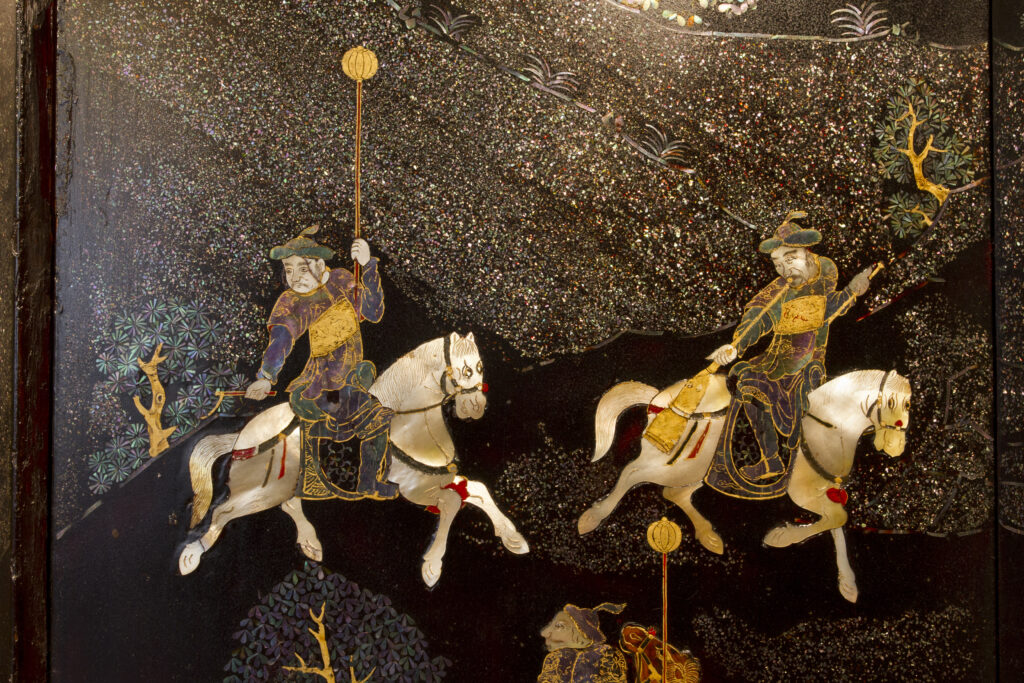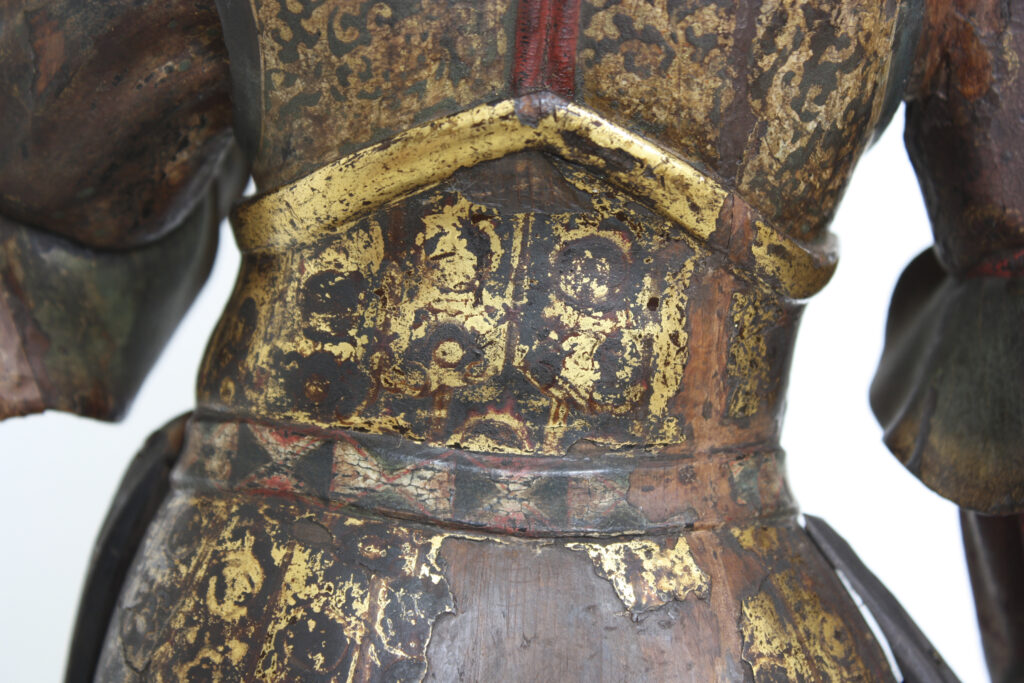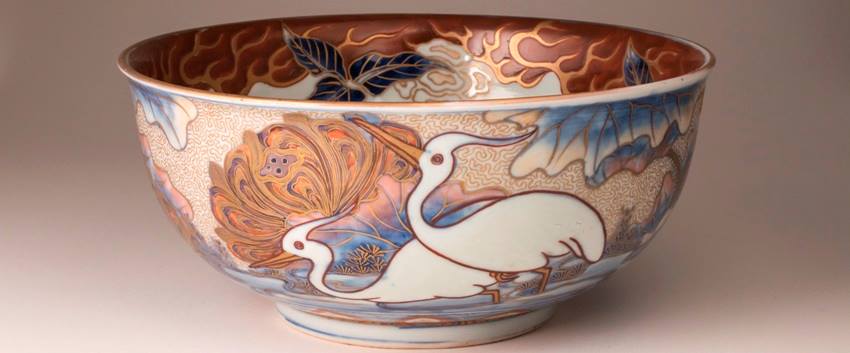ROOM 4
Room 4 preserves some of the more precious artworks of the museum.
Among these, two polychrome wooden sculptures of the Kamakura period (1185-1333) stand out. They are two of the twelve divine generals of Nyorai Buddha, probably works of Nara’s Kei school sculptors.
The horizontal showcases contain Japabese sword accessories (kodōgu) finely decorated. They are handguards (tsuba), handle fitting for small knives (kozuka), pins for hair (kōgai), small plaques (menuki), collars (fuchi) and sword-hilt pommel (kashira).
In the centre of the room there is the precious lacquer lady’s sedan-chair, onna norimono. The long upper rod was supported by four or six people, while the lady inside was comfortably resting on a silk cushion and could look outside without being seen, through the light gauze that covered the windows.
You can enter and watch inside the chair downloading the app MuseoOrientale from Google Play [https://play.google.com/store/apps/details?id=com.theedgecompany.museoorientale&hl=it]. Behind the sedan-chair visitors can see the precious lacquer Coromandel style Chinese screen in 12 panels, with hunting scenes.
In the vertical showcases, pieces of the most famous Japanese porcelain manufactures are exhibited. You can recognize Nabeshima dishes, produced for the exclusive use of the lords of Nabeshima, Kakiemon pieces, from the nickname of Sakaida Kizaemon (1596-1666), Kyoto, Kutani, Satsuma and Imari porcelains, the latter mainly produced for export.















